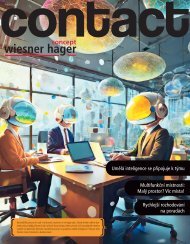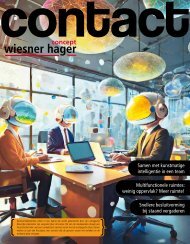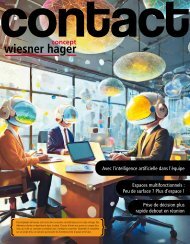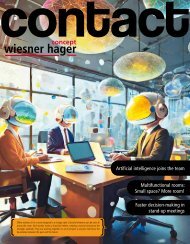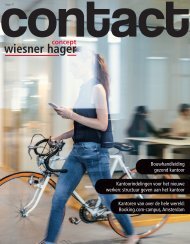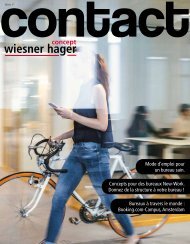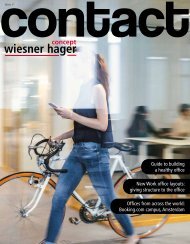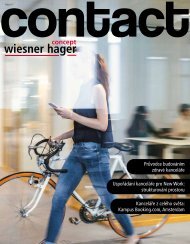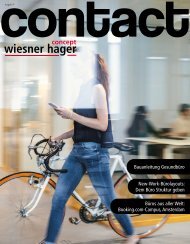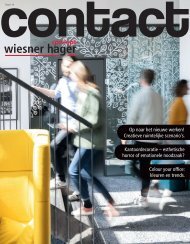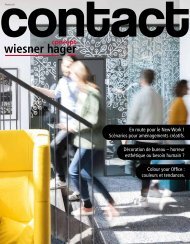contact office magazine #29
Other countries, other customs. Not least, this can be seen in the way in which we design our office spaces. Owing to mentality, rental costs and individual space requirement, there aren’t just miles between Asia, Europe and America, but worlds.
Other countries, other customs. Not least, this can be seen in the way in which we
design our office spaces. Owing to mentality, rental costs and individual space requirement,
there aren’t just miles between Asia, Europe and America, but worlds.
- No tags were found...
You also want an ePaper? Increase the reach of your titles
YUMPU automatically turns print PDFs into web optimized ePapers that Google loves.
Offices from around the world<br />
Quarter Pounder<br />
with cheese.<br />
Last year, McDonald’s moved its headquarters from Oak Brook to Downtown Chicago, a distance of<br />
30 kilometres. The new <strong>office</strong> with its stacked departments makes such a healthy and comfortable<br />
impression that you wonder when their food will follow this successful trend. A highlight is the wellness<br />
suites set up on each floor with quiet rooms, a library and a prayer room. I’m lovin’ it.<br />
employees moved to Randolph Street, Downtown<br />
Chicago.<br />
The eight-story building designed by Gensler Architects<br />
looks amazingly tasteful. The brick façade with<br />
its steel strips and square glass panels doesn’t give in to<br />
the tried and tested McDonald’s aesthetic. Rather, the<br />
50,000 square-metre structure incorporates the construction<br />
materials typical of Chicago and conforms to<br />
the plot like an obvious piece of a jigsaw, where once<br />
there was a sober warehouse and logistics hall. Three<br />
partitioned entrances lead into the <strong>office</strong> headquarters,<br />
into the so-called Hamburger University, where<br />
future employees and franchisees are trained, and into<br />
the McDonald’s global menu restaurant where you can<br />
find all the burgers, fries and shakes on the menu that<br />
are sold all over the world.<br />
© Garrett Rowland<br />
At the centre of the building, a giant atrium with<br />
glazed walkways, galleries and stairways and landings<br />
running criss-crossed hither and thither, seemingly<br />
jerkily. Here and there, glazed meeting spaces over<br />
several floors protrude into the empty space, as if<br />
you wanted to have a curious peek in or out. And<br />
between all this, there is an installation by New York<br />
artiest Jacob Hashimoto hanging from the ceiling and<br />
filling the room. The oeuvre is called A Gateway to a<br />
Whispered Possibility of Existence, and it consists<br />
of hundreds of coloured, patterned, sometimes<br />
weightlessly translucent kites made from bamboo,<br />
resin and acrylic. It is as if you were caught in an exhilarating<br />
dream – somewhere between flower power,<br />
M. C. Escher and the elegance of a recently opened<br />
Louis Vuitton flagship store. For 47 years, McDonald’s<br />
headquarters has been at its traditional address in<br />
Oak Brook, situated around 30 kilometres west of<br />
Chicago. The <strong>office</strong>s were scattered over several<br />
buildings arranged across a large, green campus.<br />
With the identity change away from the suburban<br />
fast-food provider, however, to the urban lifestyle<br />
restaurant, as the burger empire likes to claim, the<br />
necessary symbolic step must also be made on a<br />
management level. In 2018, the company gave<br />
up the campus at the edge of the city and all 2,000<br />
© Garrett Rowland<br />
22 <strong>contact</strong><br />
<strong>contact</strong> 23




